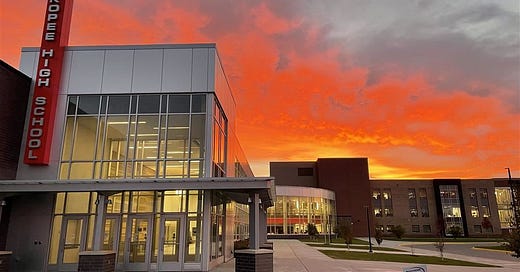Shakopee School Board Reviews Financial Outlook Amid Inflation and Birth Rate Challenges
By Ryan Dahnert
The Shakopee School Board held a work session this week to review two presentations outlining the district’s current budget status and long-term financial outlook.
Finance Director Bill Menozzi presented a proposed balanced budget for the 2025-26 school year, which reflects the district’s ongoing efforts to manage declining student enrollment and address funding challenges. Superintendent Mike Redmond joined Menozzi to share a forward-looking financial projection that warns of a significant budget shortfall for the 2026-27 school year and beyond.
2025-26 Budget Remains Balanced Despite Enrollment Declines
According to the district, the proposed budget for the upcoming 2025-26 school year is balanced, despite ongoing decreases in student enrollment and state funding that continues to lag behind inflation. District leaders have taken steps to adjust for these enrollment shifts while maintaining essential services and educational quality.
Financial Challenges Loom for 2026-27 and Beyond
Looking ahead, the district is facing a projected $7–9 million shortfall in the 2026-27 school year. The causes are largely attributed to continued enrollment declines driven by lower birth rates, as well as an ongoing gap between state education funding and inflation.
From 2020-21 through 2024-25, Shakopee Public Schools lost more than $8.2 million in revenue due to enrollment declines. Compounding the issue is a state funding shortfall of over $6.6 million annually—an amount the district would have received had state aid kept pace with inflation over the past four years.
“This is not a unique challenge to Shakopee,” said Superintendent Redmond. “Districts across Minnesota are facing similar issues, but the reality is that the gap between expenses and revenue is growing.”
Levy Funds Used as Promised
In 2021, Shakopee voters approved an operating levy to support the district. Officials emphasized that they have followed through on the commitments made during that campaign. The levy helped restore class sizes to 2020-21 levels, brought back eliminated staff positions, reinstated 5th grade band and College in the Schools courses, improved transportation access, and expanded fine arts and activity offerings. Compensation improvements were also made to move staff salaries closer to the mid-range of comparison districts.
Next Steps: Planning and Community Engagement
With a sizable funding gap looming, school board members have begun the planning process to determine how to respond. The district plans to include this ongoing financial planning as a central discussion point in upcoming board meetings throughout April, May, and June.
All presentation materials, including those shared during this week’s session, are available on the district website and BoardBook.


